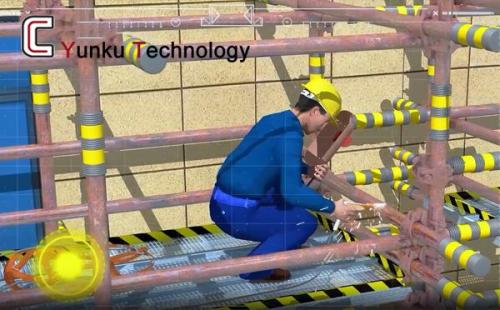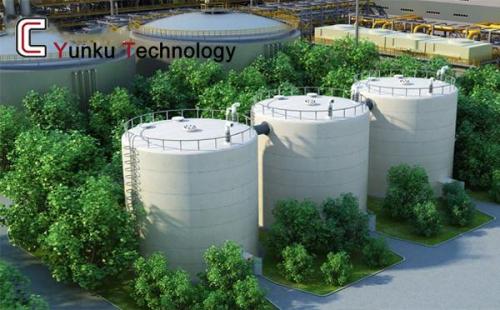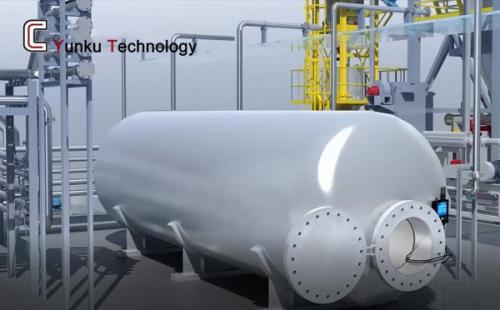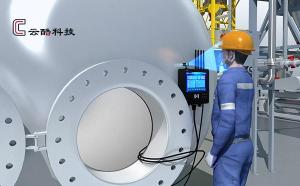- current location:
- Home
- >
- News
- >
- Industry News
-

Specification for the use of smart safety harnesses in working at heights
Before using the smart safety harness, wear the harness and check the quality of the harness to ensure safe use. Observe whether the nylon belt has broken threads and obvious scratches, whether the metal hook has obvious cracks, and whether the hook locking device is intact and usable.
Industry News 2025-05-28 -

How to monitor the use of safety harnesses for personnel working at heights?
Safety harnesses are indispensable personal protective equipment when performing work at height. However, due to a lack of personal safety awareness or other factors, operators may not wear or properly use their safety harnesses, which may lead to safety accidents such as falls from height.
Industry News 2025-04-28 -

How to do a good job of confined space operation protection
Yunku Tech for confined space operation design and development of confined space smart monitoring equipment to guard the safety of operations, fusion of pre-operation, operation, after the operation to form a full closed-loop safety management.
Industry News 2025-04-24 -

Revolutionizing Fall Protection: The Transformative Power of Intelligent Safety Harnesses
As a revolutionary product for aerial work safety protection, intelligent safety harness builds a three-dimensional protection system from risk warning to real-time management through the deep integration of Internet of Things, big data and other technologies.
Industry News 2025-04-09 -

Factors affecting the use of smart safety harnesses
With the development of science and technology, smart safety harnesses are gradually becoming a new type of equipment for building safety. However, many factors may affect the performance and effectiveness of smart safety harnesses in actual use.
Industry News 2025-04-01 -

Yunku Tech's Confined Space Monitoring Equipment: Intelligent Solutions to Guard Operational Safety and Efficiency
In petrochemical, municipal engineering, energy and power fields, confined space operations (such as storage tanks, pipelines, underground well chambers) are an important part of daily operation and maintenance.
Industry News 2025-03-25 -

Choosing Smart Safety Harnesses for Construction Sites
As one of the applications of intelligent technology in the construction industry, the smart safety harness for construction sites has gradually received widespread attention and application.
Industry News 2025-03-12 -

How to prevent poisoning and asphyxiation in confined space operations
Poisoning and asphyxiation accidents occur frequently in confined space operations, and it is necessary to develop clear specifications.
Industry News 2025-03-06 -

Effectively improve the safety of confined space operations, need to do these 4 points
In confined space operations, in addition to objective sources of danger, unclear risk identification of operators and insufficient safety training and education before operations are also the main causes of accidents in confined space.
Industry News 2025-02-28 -

Build safety defenses before working in confined space
Confined space operations, because of its special environmental conditions, lurk many risks that threaten the safety of personnel. In order to effectively safeguard the lives of operators, it is necessary to start with thorough preparation before operation and build a set of strict safety guarantee system.
Industry News 2025-02-12 -

Standard operating procedures for confined spaces
In perhaps inconspicuous places, there are hidden safety hazards that cannot be ignored. A clear understanding of the confined space standardized operating procedures, can be properly dealt with the relevant issues, to protect the life safety of employees and the normal operation of the enterprise. In the enterprise's safety management, do a good job in the identification and management of confined space, is the responsibility of each business owner.
Industry News 2025-02-03 -

Special attention should be paid to a number of requirements for the implementation of operations in confined spaces
Yunku Tech's confined space operation monitoring platform adopts UWB positioning technology and gas monitoring technology to independently develop an operation safety monitoring system.
Industry News 2025-01-20 -

Enabling intelligent management, opening a new era of accurate Bluetooth personnel positioning
In today's rapid development of information technology, Bluetooth personnel positioning technology is changing our life and work in an unprecedented speed.
Industry News 2025-01-16 -

What's so Smart About Smart Safety Harnesses?
Smart safety harnesses have been developed for the risk of working at height, and the use of smart safety harnesses has been initiated and formally promoted for full use.
Industry News 2025-01-15 -

How often should confined space operations be tested for gases?
Regular gas testing within confined space operations is necessary to ensure employee safety.
Industry News 2025-01-14 -

Safety of Work in Confined Spaces
The so-called confined space refers to a space that is closed or partially closed, relatively isolated from the outside world, with narrow entrances and exits, where operators cannot work inside for long periods of time, and where there is poor natural ventilation, which is likely to result in the accumulation of toxic, hazardous, flammable and explosive substances, or where the oxygen content is insufficient.
Industry News 2025-01-13 -

Gas Detectors for Confined Spaces can Protect Personal Safety
In recent years, the state for the confined space safety precautions, more and more attention, so that many of the confined space are installed in the gas monitoring equipment, through this equipment to protect people's safety, to avoid accidents. With this equipment, people can go to work without worrying about their safety.
Industry News 2025-01-10 -

Areas of Functionality for Smart Safety Harness Applications
The use of smart safety harness, in addition to the use of simple, convenient, environmentally friendly, flat and beautiful and other excellent features, but also can effectively reduce the occurrence of accidents and improve the safety quality factor
Industry News 2025-01-09 -

Safety Measures for Operations in Confined Spaces
In recent years, accidents in confined space operations have occurred frequently, and often in groups of deaths and injuries, and even after the first fatal accident, fatal accidents still occur, often in the process of rescue, thus indicating that the majority of operators do not have sufficient knowledge of the dangers of confined space operations and have not mastered the preventive measures for accidents in confined space.
Industry News 2025-01-08 -

Reasons of Explosions in Confined Space Operations
With the continuous development of industrialisation, explosion accidents in confined space operations are becoming more and more frequent, posing a great threat to the safety of people's lives and property. I
Industry News 2025-01-07 -

General Knowledge of Safe Operation in Confined Space
Safe operation in confined space requires attention to the following nine points
Industry News 2025-01-03 -

Emergency Response Methods for Confined Space
There are many potential dangers associated with confined space operations, but don't panic, as long as you have the right emergency response methods, you can turn the situation into a success.
Industry News 2025-01-02 -

Safety of Operations in Confined Spaces
The safety of confined space operation should not be ignored, and enterprises should strengthen safety management, training and rescue work to improve the safety awareness and skill level of operators.
Industry News 2024-12-31 -

What Are The Main Areas in Which Smart Safety Harnesses Are Used?
Smart safety harnesses are mainly used in the construction industry, power industry and new infrastructure.
Industry News 2024-12-27 -

List of potential hazards in confined space operations
Through the analysis of confined space operation accidents in recent years, it is found that: the problem of blind rescue is very prominent, nearly 80% of the accidents due to blind rescue led to an increase in the number of casualties, in the confined space operation accidents in which more than 50% of the fatal personnel for the rescuers.
Industry News 2024-12-26

